- Home
- Instruments
- Gear
- Recording
- Lessons
- Reviews
- Blog
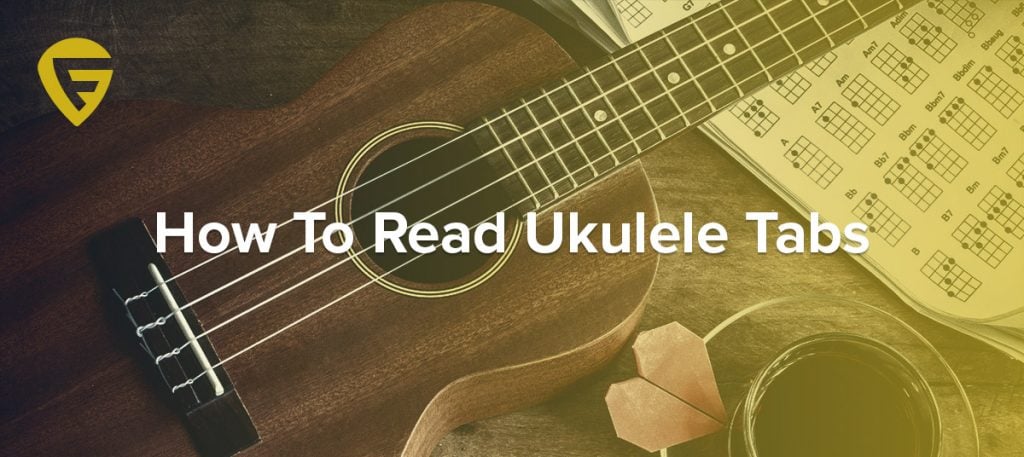
You have your new ukulele, you know how to tune it, and now you can learn how to play your favorite songs by reading ukulele tablature or ‘tab’.
The good news is that if you are familiar with guitar tab, then ukulele tab follows the same structure, so you won’t need to spend much time getting to grips with it.However, if you’re a ukulele beginner and have never read tab, don’t worry – it’s very simple, and nowhere near as complicated as reading sheet music.
As soon as you pick it up, you’ll be able to learn any song that’s been tabbed (and that’s pretty much all of the popular uke tunes). Ready to learn? Let’s get started.
Note: When discussing tunings, we’re talking about the standard tuning for concert, soprano and tenor ukuleles. Baritone ukes are tuned slightly differently, but the tab concept is exactly the same.
A ukulele tab is instantly recognizable, with four horizontal lines across the page, representing the four strings of a ukulele. Imagine the tab as a birds-eye view of your ukulele fretboard. The top line is the thinnest string (A) and the lowest of the four is the thickest string (G).
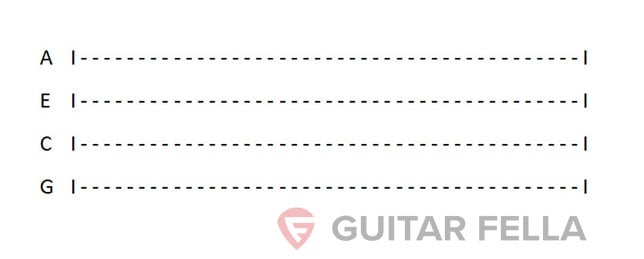
While the four lines of the tab represent the four strings of a ukulele, the numbers that sit on these lines represent what frets your fingers should be on.
A ukulele tab with no notes isn’t very useful, so let’s look at an example. Remember that you must read the tab from left to right.

Anytime you see a 0, this signifies an open string. A 1 signifies the first fret, a 2 is the second fret, a 3 is the third fret… See a 15? That’s the fifteenth fret. And so on.
So, in this example, you’d begin by plucking the G string open, then the first fret, second fret and third fret, all on the G string. Then you’d move down to the next line, representing the C string. On this string you repeat the pattern – pluck it open, then the first fret, the second, and the third. Repeat this pattern for the next two strings.
When you have grasped the concept of reading single notes on a ukulele tab, you can start to understand how chord tabs work. It’s exactly the same concept, in that the numbers represent the fret that must be played – although this time you play two or more notes simultaneously. Here are some chord examples:
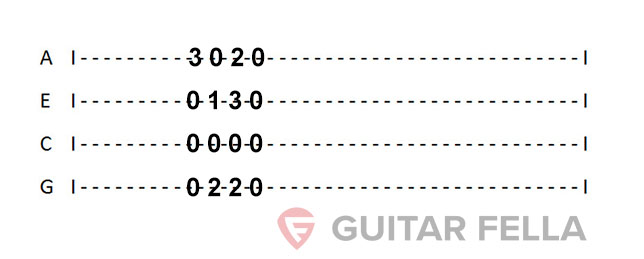
As you can see, we’ve listed four basic chords as an example.
To play a C chord, this tab is telling you to play open on the G string, open on the C string, open on the E string, and finally the third fret on the A string. Strum all four simultaneously and you’ve got yourself a C chord!
Then move on to the next chord, which is an F. Here play the second fret on the G string, an open C string, the first fret on the E string, and an open A string. You can follow the same formula for the G and Am chords.
Playing the ukulele isn’t usually considered as complicated as playing the guitar, although at times you will need to use some more advanced techniques such as hammer-ons, pull-offs and slides. We won’t dwell on these too much, but here are some illustrations of what to look out for.
If you aren’t sure what a hammer-on, pull off or slide actually is, check out this video for a quick look (even though it’s on a guitar, the concept is the same for a ukulele).
Hammer-On
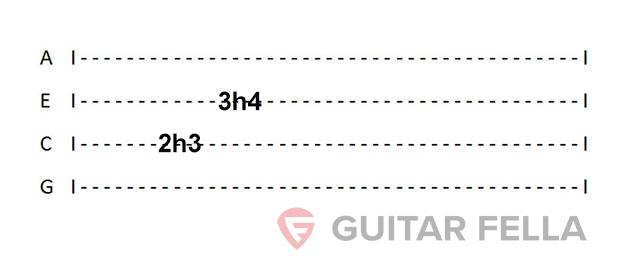
In the tab above, a hammer-on is represented by a single ‘h’ between two fret numbers. To perform a hammer-on, you pluck one note then press the next note immediately after it (without plucking a second time). In the example above, you would pluck the second fret on the C string, then press your next finger onto the third fret. Then move down a string to the E and pluck the third fret, before hammering-on to the fourth fret.
Pull-Off
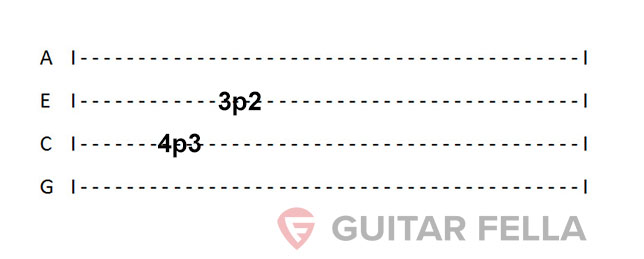
The easiest way to describe a pull-off is that it’s the opposite of a hammer-on! On a tab, a pull-off is represented by a small ‘p’ in between fret numbers. So, in our example above, you would hold both the fourth and third fret on the C string, then pluck the fourth and quickly pull your finger off, leaving your finger on the third.
Slide
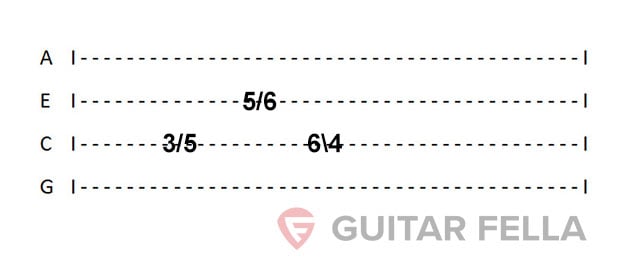
Sliding can be done both ascending (going up) and descending (coming down). An ascending slide is represented by a / symbol, and a descending slide is represented by a \ symbol.
In the example above, you would pluck the third fret on the C string, then – keeping your finger on the fret and without plucking a second time – slide your finger to the fifth fret. Next, you’d pluck the fifth fret on the E string then slide up to the sixth fret in the same fashion. Finally move back to the C string, pluck the sixth string, then slide down the fretboard to the fourth fret with the same finger.
Now you know how to read tabs, you’ll want to go find some songs to play. The good news is that free ukulele tabs can be found online, created by both casual players and expert ukulelists. A quick search for ‘ukulele tabs’ on a search engine will deliver thousands of results, but check out Ukulele-Tabs or Live Ukulele for good examples of what’s out there.
You can also find tab books, which are a collection of ukulele songs, tabbed by professionals (which usually means they are guaranteed to be accurate). These are usually separated into theme or genre, such as traditional songs, Christmas tunes, or folk songs, or you can find collections organized by artist including The Beatles, Metallica, Radiohead, and The Rolling Stones. You can find these tab books for sale in your local guitar store or on online marketplaces such as Amazon.
With all those numbers, lines and symbols, tabs can seem a little complicated at first, but as soon as you understand the concept they are simple and very intuitive.
The best way to learn tab is to try some out – you can read about them for hours, but unless you actually put it into practice you aren’t going to fully understand. So, go grab your ukulele and have fun!

Reader Interactions